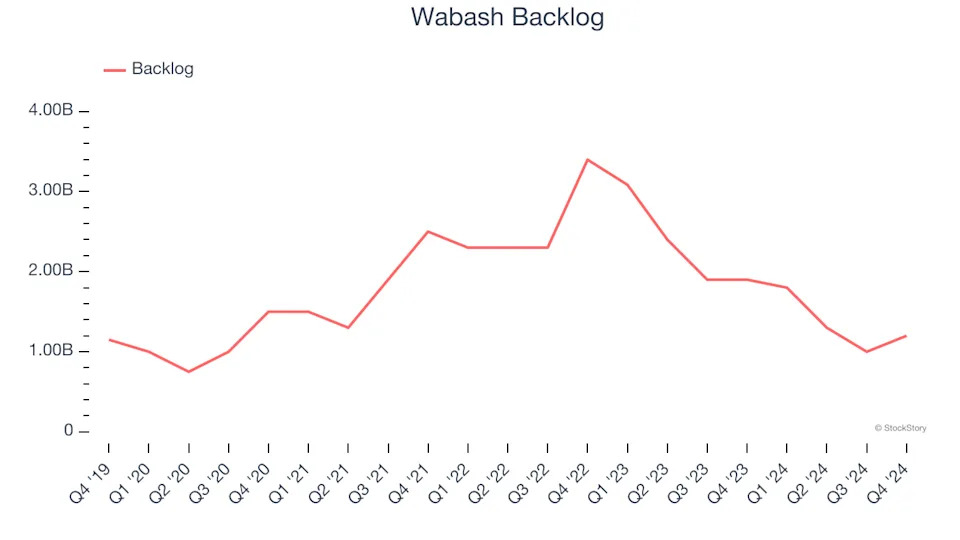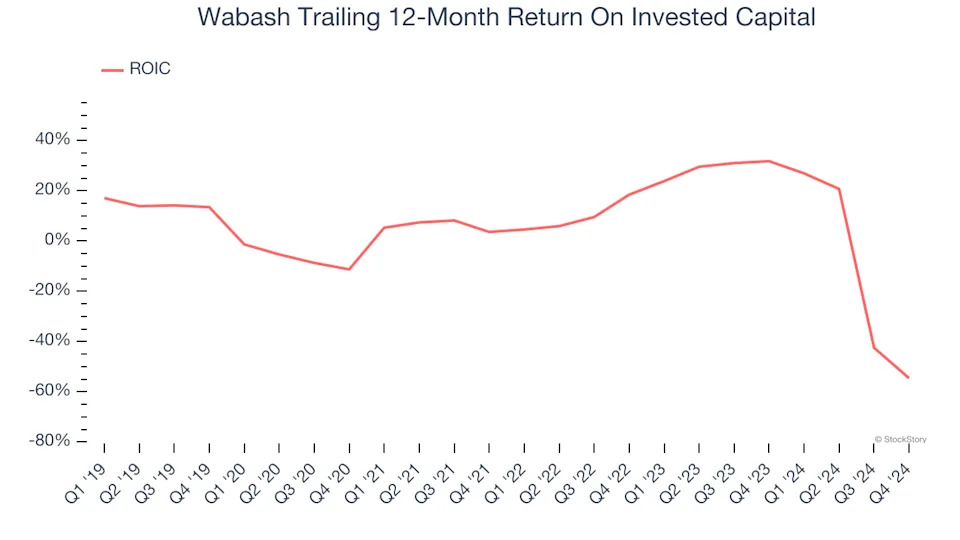
3 Reasons WNC is Risky and 1 Stock to Buy Instead
Shareholders of Wabash would probably like to forget the past six months even happened. The stock dropped 42.9% and now trades at $9.97. This was partly driven by its softer quarterly results and may have investors wondering how to approach the situation.
Is now the time to buy Wabash, or should you be careful about including it in your portfolio? Get the full breakdown from our expert analysts, it’s free .
Despite the more favorable entry price, we're cautious about Wabash. Here are three reasons why WNC doesn't excite us and a stock we'd rather own.
Why Do We Think Wabash Will Underperform?
With its first trailer reportedly built on two sawhorses, Wabash (NYSE:WNC) offers semi trailers, liquid transportation containers, truck bodies, and equipment for moving goods.
1. Backlog Declines as Orders Drop
Investors interested in Heavy Transportation Equipment companies should track backlog in addition to reported revenue. This metric shows the value of outstanding orders that have not yet been executed or delivered, giving visibility into Wabash’s future revenue streams.
Wabash’s backlog came in at $1.2 billion in the latest quarter, and it averaged 24.3% year-on-year declines over the last two years. This performance was underwhelming and shows the company is not winning new orders. It also suggests there may be increasing competition or market saturation.

2. Free Cash Flow Margin Dropping
Free cash flow isn't a prominently featured metric in company financials and earnings releases, but we think it's telling because it accounts for all operating and capital expenses, making it tough to manipulate. Cash is king.
As you can see below, Wabash’s margin dropped by 5.1 percentage points over the last five years. This along with its unexciting margin put the company in a tough spot, and shareholders are likely hoping it can reverse course. If the trend continues, it could signal it’s in the middle of a big investment cycle. Wabash’s free cash flow margin for the trailing 12 months was 2%.

3. New Investments Fail to Bear Fruit as ROIC Declines
ROIC, or return on invested capital, is a metric showing how much operating profit a company generates relative to the money it has raised (debt and equity).
We like to invest in businesses with high returns, but the trend in a company’s ROIC is what often surprises the market and moves the stock price. Unfortunately, Wabash’s ROIC has decreased over the last few years. Paired with its already low returns, these declines suggest its profitable growth opportunities are few and far between.
